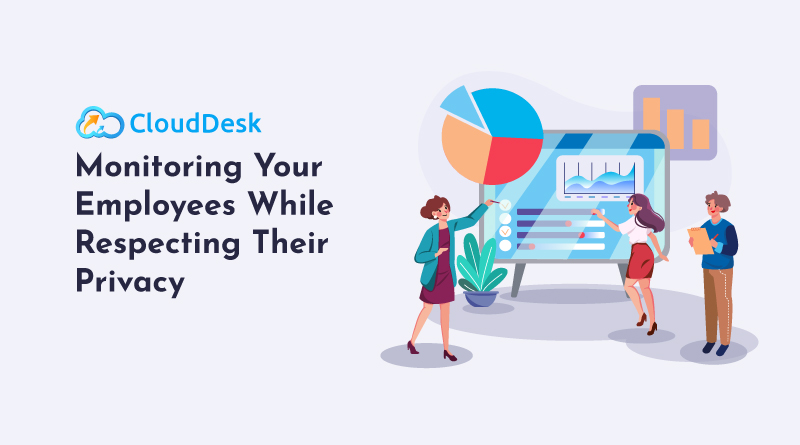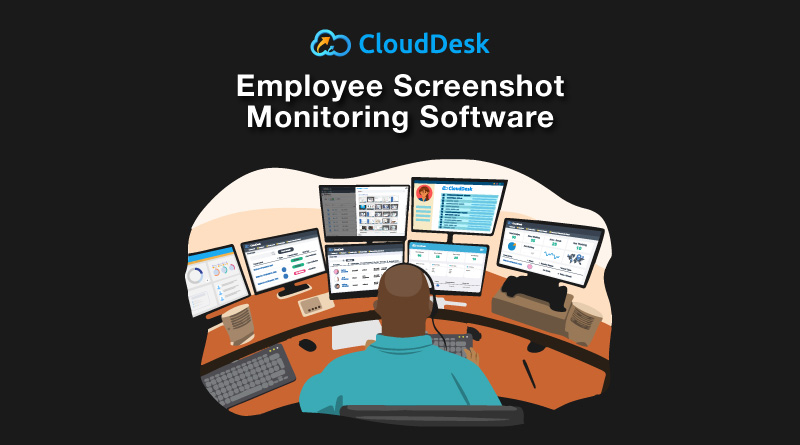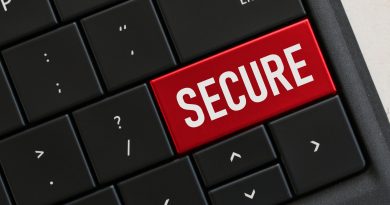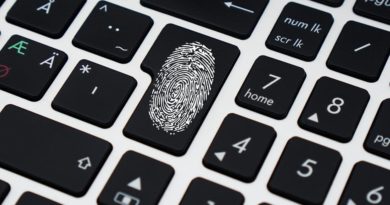How To Monitor Remote Employees Without Looking Like The Big Brother
If you are reading this, there is a good chance that you were forced to work from home in the recent past.
The remote working trend became popular because it was a necessity but now, after teams of all sizes, across cultures and geographical locations have managed to work remotely, it looks like it is here to stay.
Regardless of whether you personally prefer working from home or going to the office, remote working and distributed teams are going to be a big part of the workplace. The proverbial revolution has already begun and organizations have very little time before they find themselves left behind.
In other words, the rapid and widespread acceptance of remote working culture has ensured that regardless of their own preferred way of conducting business, organizations will have to be remote-friendly in order to stay relevant to the top talent in the market.
Whether you are a digital agency or a product company, the remote working trend will have a direct and noticeable impact on the way you work. For instance, in some cases, the right professionals or freelancers will exclusively engage with remote opportunities.
When it comes to shifting to a remote-friendly workplace, employee monitoring is the big elephant in the room that most of us want to avoid talking about.
On one hand, the management is worried about a decline in productivity, and on the other, the employees are worried about having their privacy invaded and their work-life balance disrupted.
As difficult as it may be, employee monitoring is necessary. However, it isn’t necessarily evil.

What I mean is, there are ways for organizations to implement employee monitoring without the act of feeling like an invasion of privacy of the employees.
Here’s how you can implement it:
Work Towards A Shift In Mindset
Successfully implementing a remote working culture will demand a lot of trust within the people that make up your organization. However, where many go wrong is that they think this trust will have to be built from scratch.
When in reality, your team members trusted each other and depended on each other for their success every day in the office. Your managers trusted their teams with their work and delegated confidently. The only change is that the same trust now needs to be shown in a virtual environment.
If you are thinking “that’s easier said than done”, you are probably correct.
Shifting mindsets, especially across an organization, can take some serious work and a lot of time. However, there’s always a point where you can get started. Here are a few ways you can foster an environment of trust and harmony in your organization, which will, in turn, enable you to implement employee monitoring in a frictionless manner:
Communicate The Importance Of Trust To Your Managers
In many organizations, overzealous managers become the cause of the first conflicts that arise after the implementation of employee monitoring. Even when they have honest and pure intentions and are “only trying to do their job”, if they get carried away, it can spell disaster for your remote employee monitoring plans.
Teach your managers to trust. The great ones will go further to instill a sense of ownership in their team using that trust.

Listen To The Concerns Of Your Employees
There are so many bad things that will start happening as soon as your employees are unhappy. Sure, you are the boss and you can implement employee monitoring because it’s right, but if your employees aren’t comfortable, their productivity will suffer and your employee churn rates will skyrocket.
However, as stated earlier, employee monitoring is necessary. So, in order to implement it without friction, listen to the monitoring-related concerns of your employees. You will be surprised about how many of these concerns are about things that you don’t even want to track.
If, on the other hand, there is a metric that you would like to track that the employees have an issue with, communicate with your employees.
Communicate Across The Organisation
When you announce the implementation of new employee monitoring tools, make sure you accompany the announcement with details of exactly what metrics will be tracked and why they will be tracked.
Supporting your actions with logic and explaining that logic is the best way to minimize resistance against necessary organizational policy changes.
Restrict The Flow Of Data
While restricting what employee monitoring data your managers can see will not really contribute to an organization-wide mindset shift, it will help you avoid unnecessary conflicts in the short run.
Know What Not To Track
While communicating the purpose and logic behind your remote employee implementation efforts and policies should reduce friction, it is also important to ensure that you aren’t in fact, invading the privacy of your valued employees.
While tracking certain metrics, like biometric attendance records, is necessary, some tracking features offered by remote employee monitoring tools are simply excessive. For instance, unnecessary screen recordings or location tracking are employee monitoring features that would be irrelevant to most remote jobs. Similarly, keystroke monitoring is another irrelevant employee monitoring metric that most organizations don’t need to track.
Don’t Forget Personal Devices
Many organizations require their remote employees to use their own devices to connect to the workplace and get things done.
In such cases, the employee monitoring software(s) are usually installed on the employee’s personal device.
If you have similar plans, it is strongly recommended that you work out a manner of implementation that ensures there is no chance of leaking of the sensitive personal data present on the employees’ personal devices.
One good practice is to program your employee monitoring to only take place during working hours. If you don’t have fixed working hours, you can integrate it with a biometric attendance tracker. This way, the employee monitoring features will only be activated after the employee has “logged in” to work.
Conclusion
Finally, it is important to remind yourself to never lose sight of what remote working is really about- adopting a working style that is adaptive and flexible to ensure high productivity, along with the ample availability of the right resources and talent for your unique business needs.
Make sure all this talk about employee monitoring does not mess with the objectives of adopting remote working at your organization.
To ensure the same, you can equip your employees with tools that enable them to effectively collaborate and communicate. For instance, you can take advantage of the online tools that enable multiple users to use the same account, even if they are in different locations.











